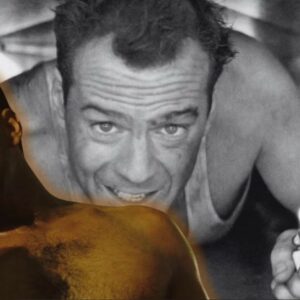“I’ve been through a lot of pain, but I’m still standing. I’m a survivor.” — Mary J. Blige
These words, spoken by Mary J. Blige, encapsulate the essence of her life and career. Blige is not merely a musician; she is a symbol of resilience, strength, and the power of transformation. Her voice, both raw and empowering, has touched the hearts of millions, not just because of her musical talent, but because of the story she tells through her art. Mary J. Blige’s journey from hardship to empowerment, from pain to triumph, resonates with anyone who has ever faced adversity. She is the epitome of survival, and her legacy is one of perseverance, healing, and self-discovery.
In this article, we explore the life and career of Mary J. Blige, examining how her struggles with poverty, addiction, and personal pain have shaped her into the iconic figure she is today. We delve into how her music became both a platform for her pain and a source of strength for countless others. Through her resilience and advocacy, Blige has become not only a celebrated artist but also a beacon of hope for those struggling to overcome their own obstacles.
Early Life Struggles
Mary Jane Blige was born on January 11, 1971, in the housing projects of the Schlobohm housing development in the Bronx, New York. Raised in a volatile environment, Blige’s childhood was marked by poverty, abuse, and neglect. Her father abandoned the family when Blige was just a child, leaving her mother to raise Mary and her siblings alone. The absence of a stable father figure combined with her mother’s struggles with alcoholism created an environment where love and security were often in short supply. Blige witnessed domestic violence and lived in a constant state of fear and uncertainty.
Despite these early hardships, Blige found solace in music. As a young girl, she would sing to herself, using her voice as an escape from the chaos around her. Music became her refuge, a way to express the pain she was feeling without words. Blige’s musical influences were varied, from gospel music in church to the soul and R&B sounds of artists like Aretha Franklin, Stevie Wonder, and Anita Baker. She often sang along to these records, perfecting her voice and drawing strength from the music that allowed her to transcend her circumstances.
Music provided Blige not just an escape, but a sense of identity. It gave her a way to channel the emotions she had bottled up for years. In her early teens, Blige began recording demo tapes, which eventually caught the attention of record executives. It wasn’t long before she was signed to Uptown Records, marking the beginning of her career in the music industry. However, the journey to stardom was not easy, and Blige’s early successes would be tested by the very demons she had been trying to outrun.
Overcoming Addiction and Personal Pain
Mary J. Blige’s rise to fame was meteoric, but with success came pressure—both from within and from the world around her. As her career took off, Blige began to face the darker side of fame. Despite her outward success, she struggled with addiction, depression, and emotional turmoil. Blige has been open about her struggles with alcohol and drug abuse, admitting that she turned to substances as a way to cope with the overwhelming pain and the trauma from her past. The demands of her career, combined with unresolved emotional pain, led her down a destructive path.
For many years, Blige’s personal life was a series of highs and lows. She was plagued by a sense of unworthiness, battling feelings of insecurity and self-doubt. Her relationships were often marred by betrayal and heartbreak, adding to the weight of the struggles she already faced. In her music, Blige poured out the agony she felt. Songs like “My Life” and “I Don’t Want to Do Anything” were raw expressions of the inner turmoil that haunted her.
But it was through her struggles that Blige created some of her most powerful and enduring work. Her pain became her muse, fueling some of her most iconic songs. The emotional depth of her music connected with fans who saw their own pain reflected in her lyrics. Blige’s authenticity, her willingness to expose her vulnerabilities, made her a relatable figure for millions of people who were also navigating their own battles. She turned her pain into art, creating a soundtrack for survival that resonated across cultures and generations.
Eventually, Blige reached a breaking point. She recognized that in order to heal, she needed to face her issues head-on. She sought therapy, went through rehabilitation, and made the decision to reclaim her life and her health. Over time, Blige began to regain control over her personal and professional life, using the lessons from her struggles to create a new path forward.
Music as a Source of Strength
Mary J. Blige’s music is a testament to her journey of healing and transformation. Each album, each song, represents a chapter in her life—a journey from pain to strength, from darkness to light. Blige’s powerful voice, combined with her ability to write deeply personal and honest lyrics, has made her music a source of strength for those who listen.
Blige’s 2001 album No More Drama marked a significant turning point in her career. The title track, which became one of her most famous songs, was an anthem for anyone tired of living in chaos. It was a declaration of freedom, a rejection of the toxic patterns that had plagued her life for so long. In the song, Blige sings, “No more drama in my life,” an assertion of her newfound commitment to self-love and healing.
Another pivotal song in Blige’s journey is “Strength of a Woman,” from her 2006 album of the same name. In this track, Blige sings about the strength that comes from overcoming adversity, from dealing with heartbreak, and from finding one’s own power. It was a message not just for women, but for anyone who had experienced hardship and found the courage to rise again. The song became a rallying cry for those who had faced challenges and emerged stronger.
These songs, and many others in Blige’s catalog, demonstrate her unique ability to turn personal suffering into universal anthems of empowerment. Her music has become a touchstone for those facing hardship, offering them a sense of connection and a reminder that they are not alone in their struggles. Blige’s voice has the power to heal, to inspire, and to lift up those who need it most.
Empowerment and Advocacy
Beyond her music, Mary J. Blige has used her platform to advocate for mental health, self-love, and resilience. She has long been vocal about the importance of therapy, self-care, and taking the time to heal. Blige is a strong proponent of embracing vulnerability, recognizing that true strength lies in accepting one’s flaws and imperfections. Through her interviews and public appearances, Blige encourages others to confront their pain, seek help, and never give up on themselves.
Blige’s work as an advocate extends beyond mental health. She has become a mentor to other artists, encouraging them to remain true to themselves and their artistry. Blige’s authenticity is one of her defining traits, and she emphasizes the importance of embracing one’s own story, no matter how difficult it may be. She has also been involved in various charitable endeavors, particularly in support of women and children, using her platform to raise awareness for causes close to her heart.
Blige’s influence extends far beyond her music. She has become a role model for generations of women, especially those who have experienced trauma or hardship. She represents the possibility of redemption and healing, a living example that it is possible to emerge from the darkest of places and thrive. Blige’s advocacy work and her commitment to empowering others have made her not only a musical icon but a cultural force.
The Power of Survivor Mentality
The concept of being a “survivor” is central to Mary J. Blige’s life and career. For Blige, survival is not just about enduring physical pain—it’s about mental, emotional, and spiritual resilience. It is about persevering through life’s challenges, no matter how insurmountable they may seem. Blige’s motto—“I’m a survivor”—is a mantra for anyone who has faced adversity and refused to be defeated by it.
Blige’s story is a testament to the power of the human spirit. Her resilience is not defined by her ability to withstand hardship, but by her refusal to let those hardships define her. She embodies the strength that comes from facing one’s fears, confronting one’s demons, and continuing to move forward despite the odds. Her life is a powerful reminder that survival is not just about surviving the storms—it’s about learning to dance in the rain, to thrive in the face of adversity.
Conclusion
Mary J. Blige’s journey is one of the most remarkable stories of resilience and triumph in the music industry. From her difficult childhood to her battles with addiction and personal pain, Blige’s life has been anything but easy. Yet, she has emerged from these challenges not only as a musical icon but as a beacon of hope and strength for others.
Through her music, Blige has given voice to the voiceless, provided comfort to the brokenhearted, and inspired millions to never give up, no matter how tough life gets. Her story is a testament to the power of survival, and her message is clear: no matter how many times you fall, you can always rise again. As she says herself, “I’m a survivor,” and that powerful declaration is one that continues to inspire and uplift those who hear it.
Blige’s story is a reminder that no matter how tough life gets, it is possible to rise above and emerge stronger. She is a living testament to the power of resilience, and her music, her advocacy, and her spirit will continue to inspire generations to come.





